Onyado Chikurintei
Onyado Chikurintei is located inside Mifuneyama Rakuen, the vast garden spreading out on the foot of Mt. Mifune. Inside the traditional Japanese architecture, there are only 11 appointed rooms furnished with an authentic yet comfortable interior. Each room offers a pleasant view of the garden with Mt. Mifune in the background. Enjoy an open-air hot spring bath surrounded by rich nature.
With warm hospitality, sophisticated dishes utilizing seasonal ingredients will also make your stay unforgettable.
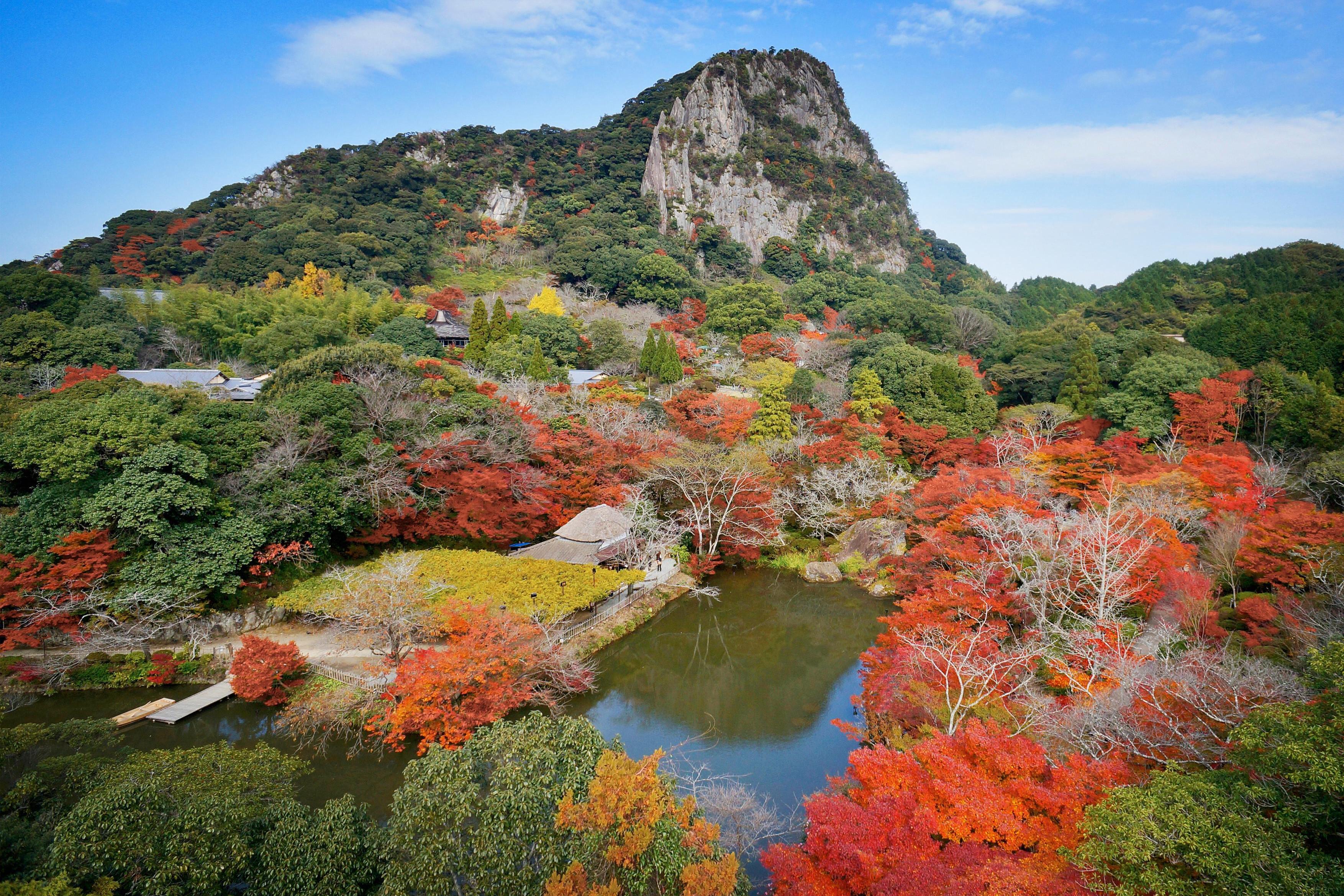
At a glance
Takeo Onsen is a long-established hot spring town located on the former Nagasaki Kaido, the route leading from the northern part of Fukuoka to Nagasaki. Since the time people were traveling on this route on foot, Takeo Onsen has been highly reputed for its high-quality hot spring water and helped people to rejuvenate themselves during their long journey.
In addition to the hot springs, Takeo Onsen soothes people physically and mentally with seasonal beauties of abundant nature too. With gardens and hills blanketed with colorful flora set against Mt. Mifune and surrounding nature, you will be amazed by exquisite views unique to Takeo Onsen.
Enjoy exploring this charming town and immerse yourself in the hot spring water loved by people over the centuries.
Highlights
Roman Gate
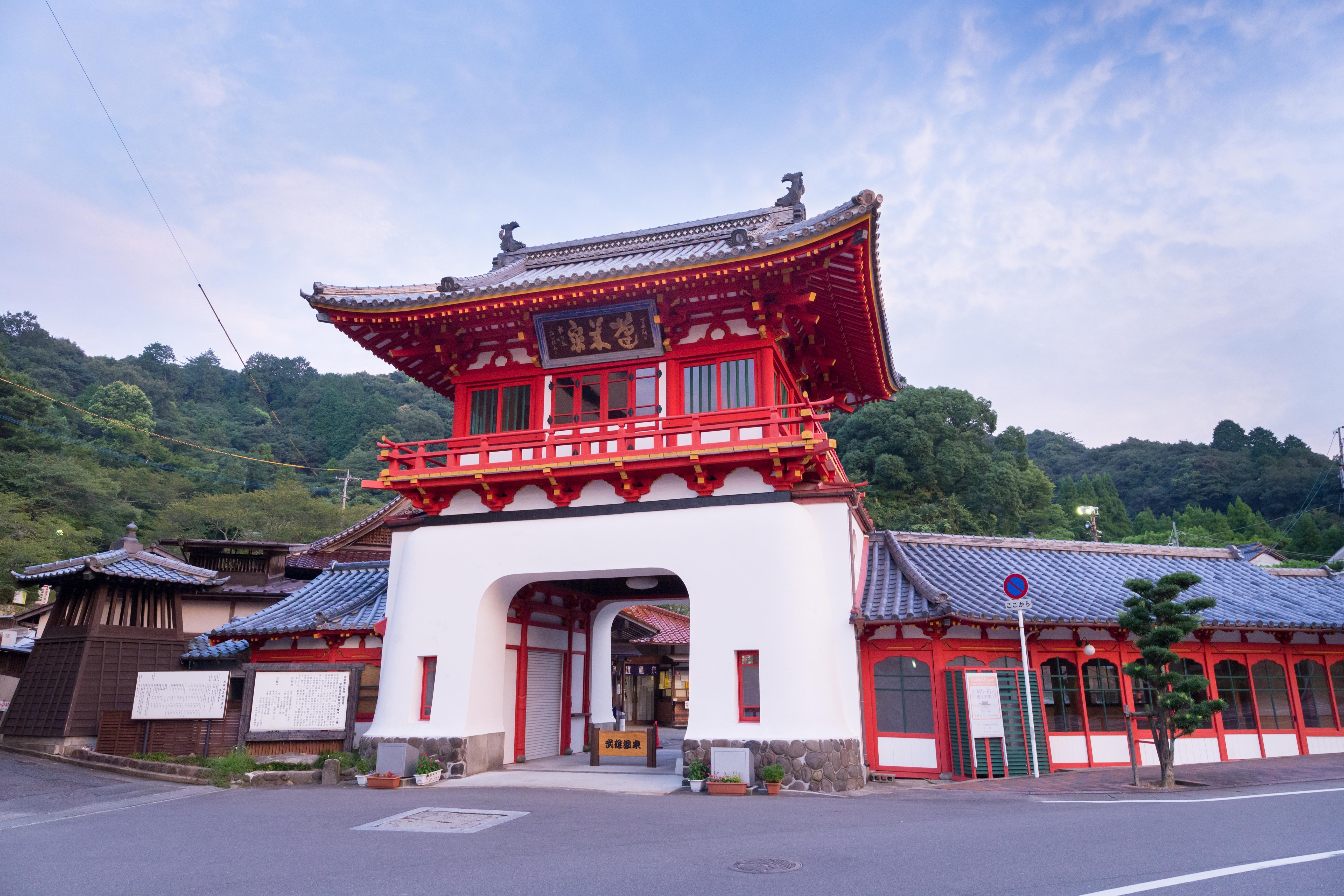
Romon Gate is an iconic symbol of Takeo Onsen loved by locals and visitors alike.
The gate was designed by a renowned architect from Saga prefecture, Kingo Tatsuno, who also designed Tokyo station. In its design, you can find the reminiscence of Ryugu, the dragon castle in Japanese folklore. The construction method of Romon Gate is also unique in that the gate was built without using any nails.
Romon Gate will give you a warm welcome to Takeo Onsen and you can start exploring this historical hot spring town from Takeo Onsen Shinkan located just behind this gate.
Takeo Onsen Shinkan
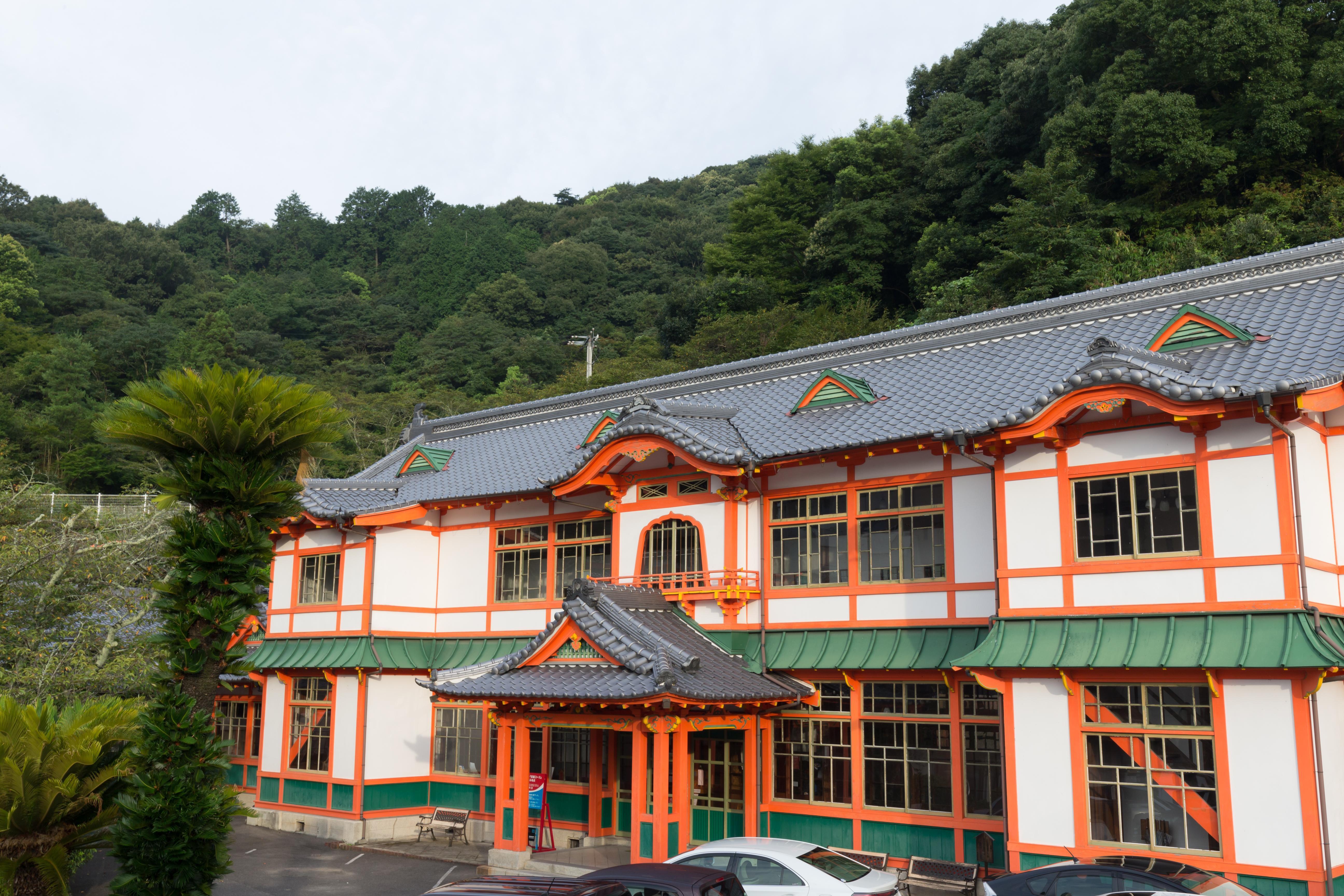
Takeo Onsen Shinkan used to be a public hot spring bath from 1915 to 1973.
The traditional Japanese style building designed by Kingo Tatsuno, the same architect as Romon Gate, was reconstructed and is now opened as a museum of the history of Takeo Onsen.
Inside the building, different types of baths are exhibited, such as ones built with valuable majolica tiles or pieces of Arita pottery, as well as the bath designed for Taisho emperor. From those baths and other exhibitions, you will be able to get a glimpse of how people including important historical figures and famous artists enjoyed the high-quality hot spring water in Takeo Onsen in the old days.
Takeo Shrine and Giant Camphor tree
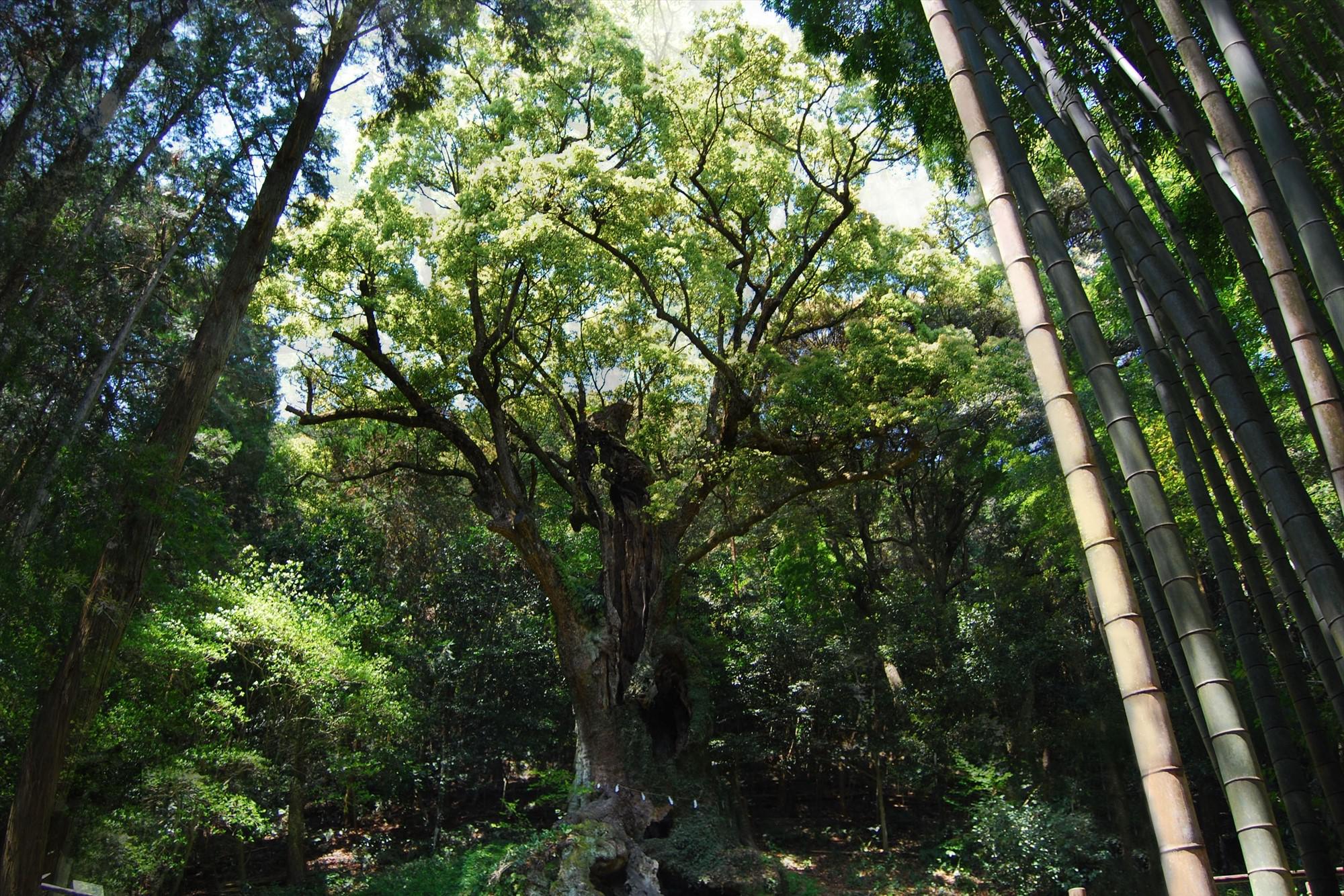
Established in 735, Takeo Shrine is the oldest shrine in Takeo City. This time-honored shrine stores the oldest documents in Saga prefecture and other important historical documents and letters.
Takeo Shrine is also well known for unique sacred trees. The most famous one is Takeo Ohkusu, a 3000-year-old giant camphor tree. After walking through a beautiful bamboo grove behind the main shrine hall, you will encounter this giant tree - around 30 meters high and 26 meters around its root - standing in the solemn atmosphere. A huge hole at the foot of the tree enshrines a god inside.
Another spiritual tree is called Meotosugi, a pair of two cedar trees standing next to each other whose roots and branches are believed to be connected together. Meotosugi (Meoto literally means husband and wife) symbolizes good relationships and that is why many people visit here to pray for good matches as well as happy marriages.
Keishu-en
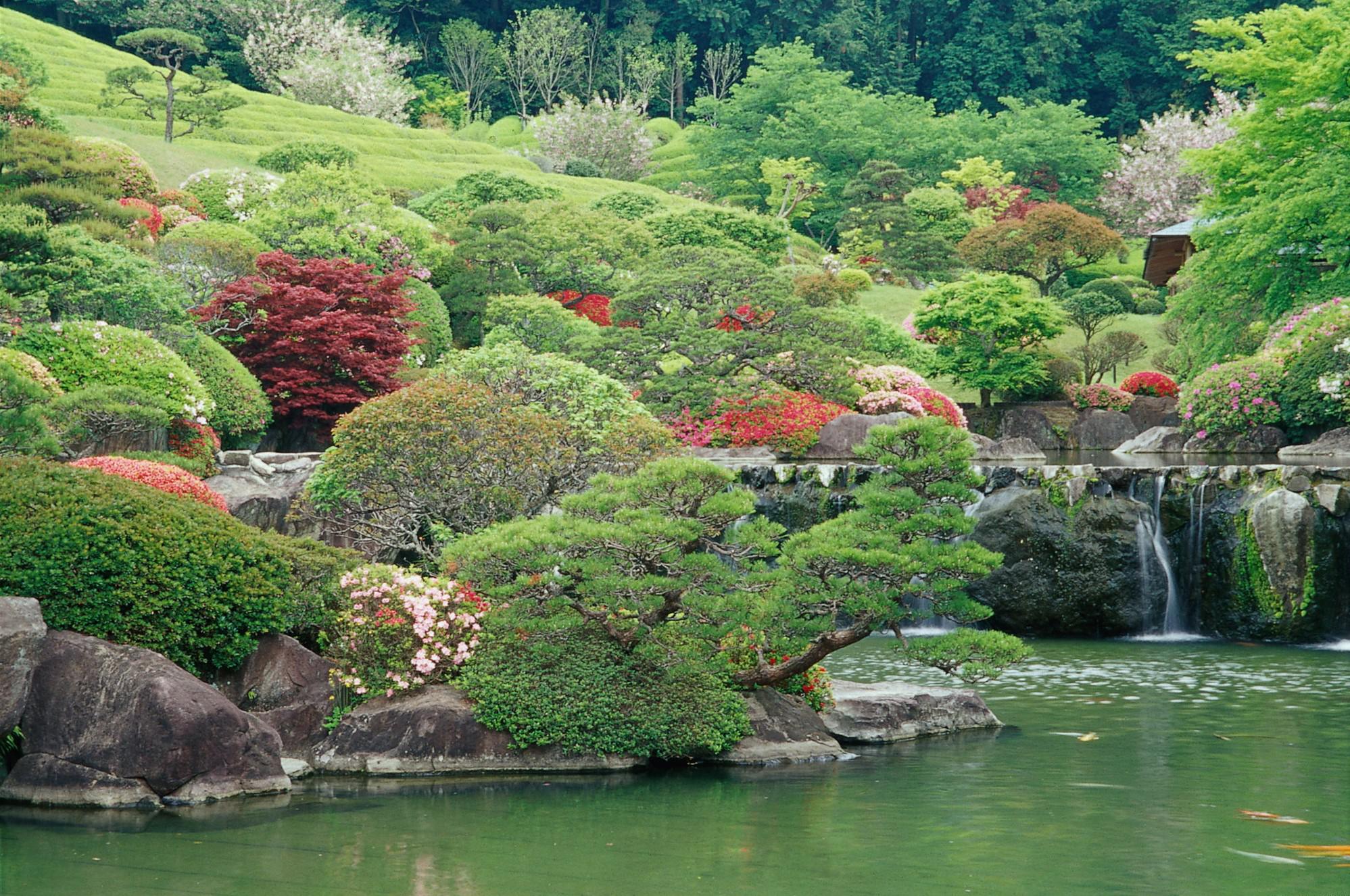
Keishu-en is a Japanese garden designed by Kinsaku Nakane, who also worked for Adachi Museum, one of the top-rated Japanese gardens. You can enjoy Keishu-en in any season. Flowers and trees offer seasonal beauties, such as weeping cherry trees and azalea flowers in spring and yellow or red color leaves in autumn. Tea plantations spreading outside the garden serve nicely as the backdrop (called shakkei technique in Japanese gardening) and harmonize well with waterfalls flowing quietly on rock arrangements in the garden. In Yoko Museum built in a pond as if it is floating on the water, Chinese potteries are exhibited and you can learn the origin of Japanese pottery through the artworks.
Mifuneyama Rakuen
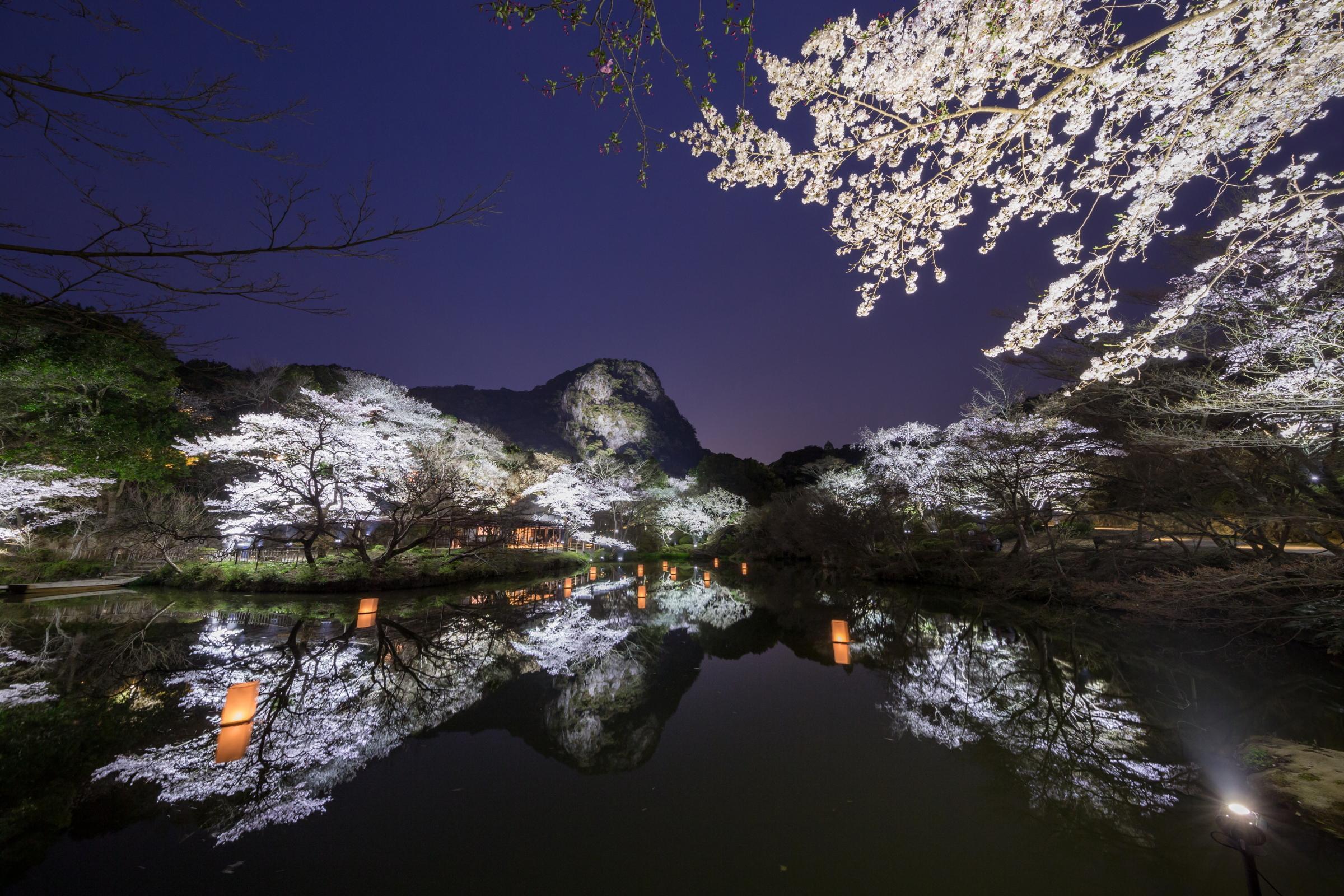
Spreading out over 500,000 sqm on the foot of Mt. Mifune, Mifuneyama Rakuen is considered as one of the most picturesque Japanese gardens in Saga prefecture. The garden was originally built as a villa of the feudal lord of Takeo area in 1845. Later, it became open to the public and has attracted locals as well as visitors. Throughout the year, seasonal flowers and trees in the garden entertain people with stunning scenery against the backdrop of the Mt. Mifune cliff. In spring, 50,000 colorful azaleas cover the garden and create a spectacular landscape. Stroll around the garden and stop by a tea house to look out over a garden over a cup of Japanese tea and sweets.
While you are staying in Takeo Onsen area, do not miss Mifuneyama Rakuen illuminated at night, too. Check seasonal events. You will be marveled at a different beauty of the illuminated flowers and trees in the garden and appreciate even more romantic atmosphere.
Recommended Accommodations
in Takeo Onsen
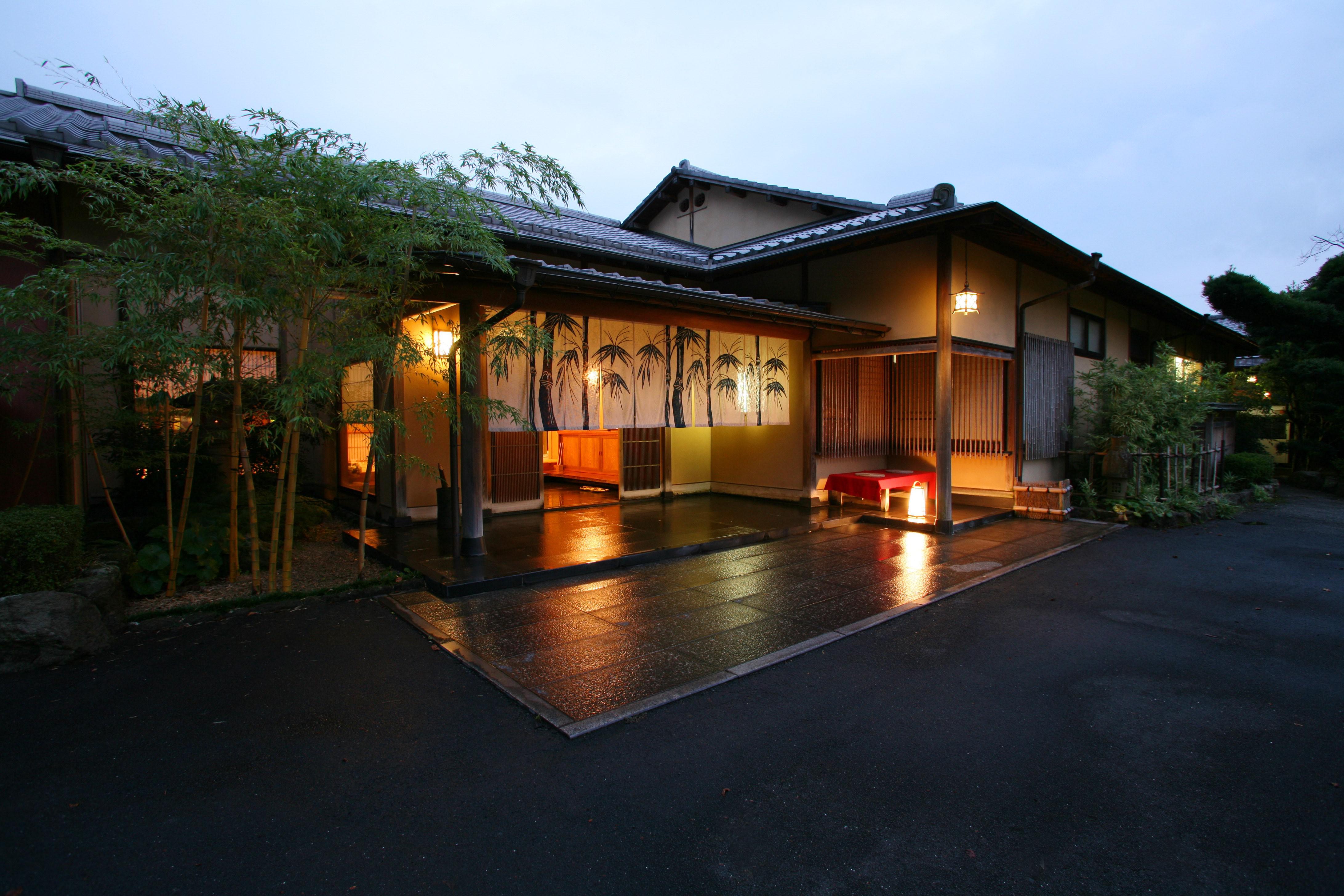
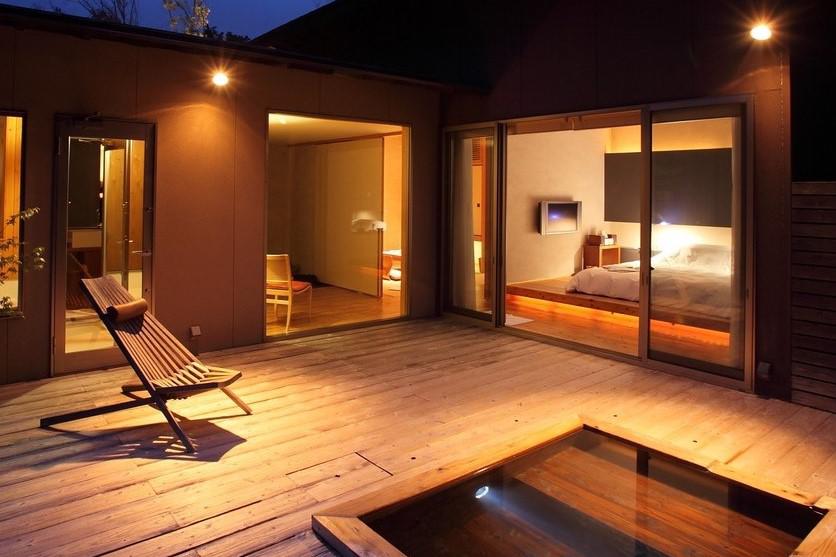
Kaze no Mori
Kaze no Mori is a modern style Japanese ryokan nestled in the deep forest of Oku Takeo Onsen. All 11 guest rooms are stylish and accommodate different types of open-air hot spring baths. Guests can enjoy modern Japanese dishes using a variety of ingredients from seafood to beef and local vegetables.
Indulge yourself in Takeo Onsen's high-quality hot spring water in the tranquil nature.
Custom travel in Takeo Onsen
For more information, or to start customizing your own itinerary, please contact us.
